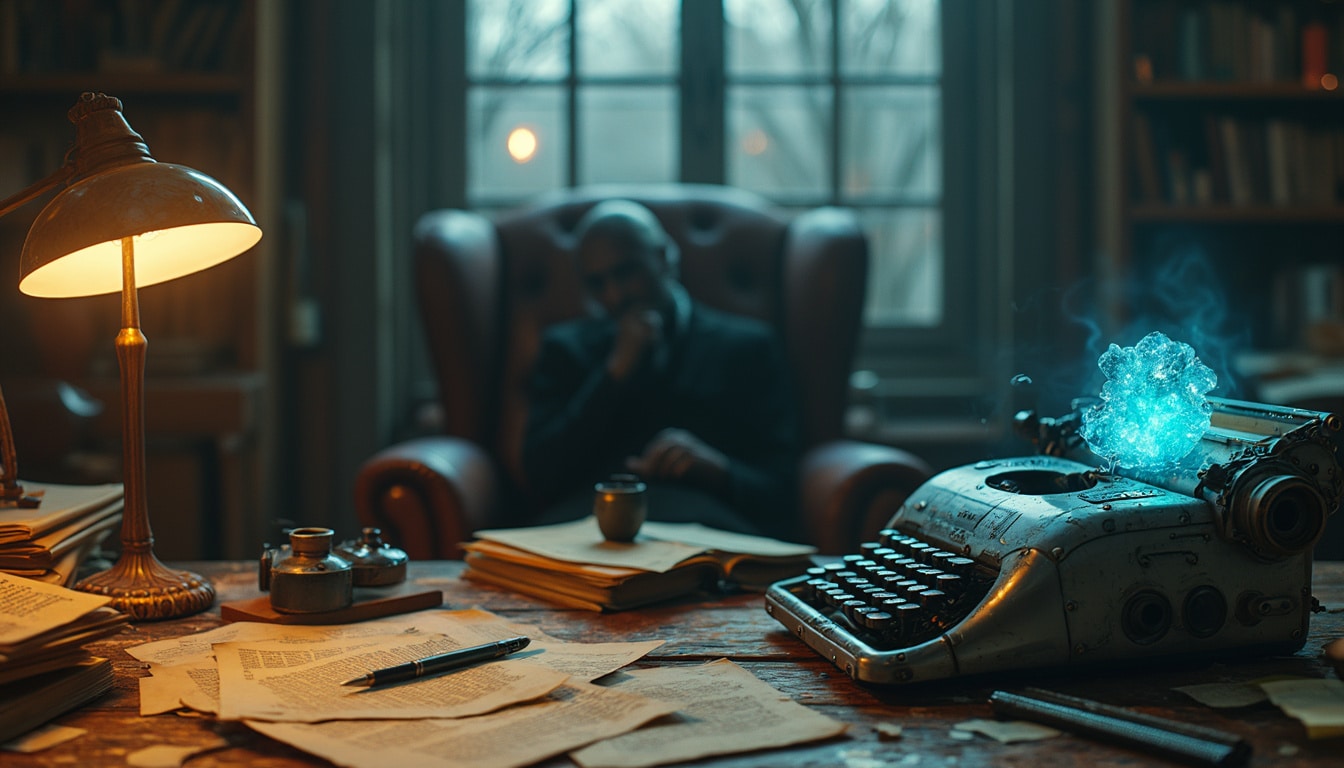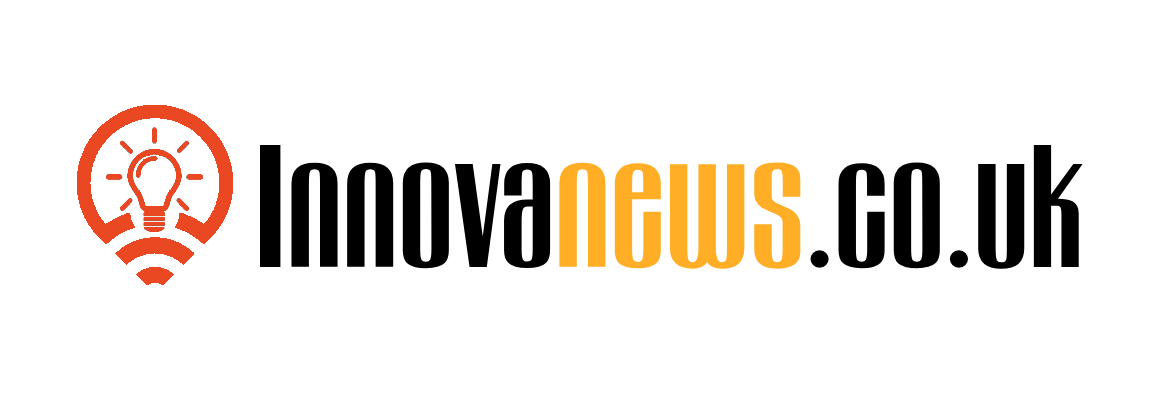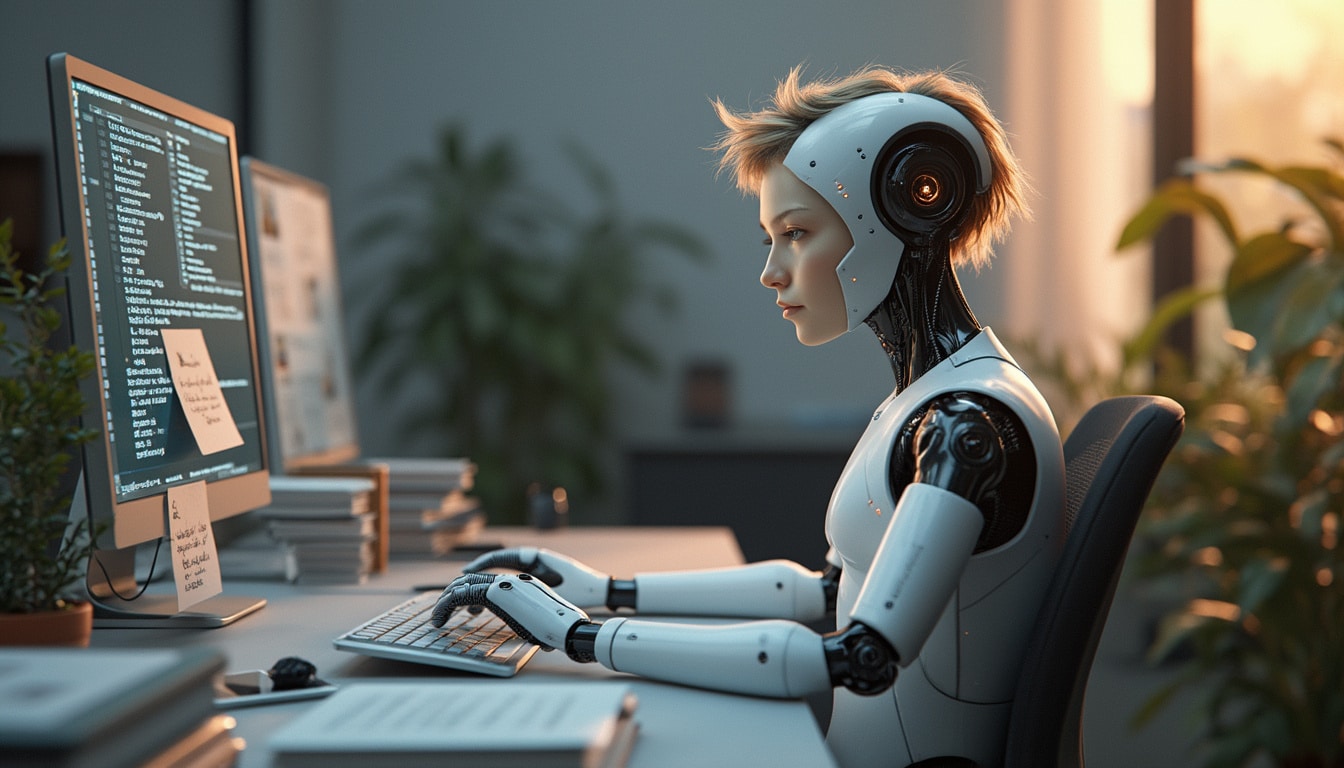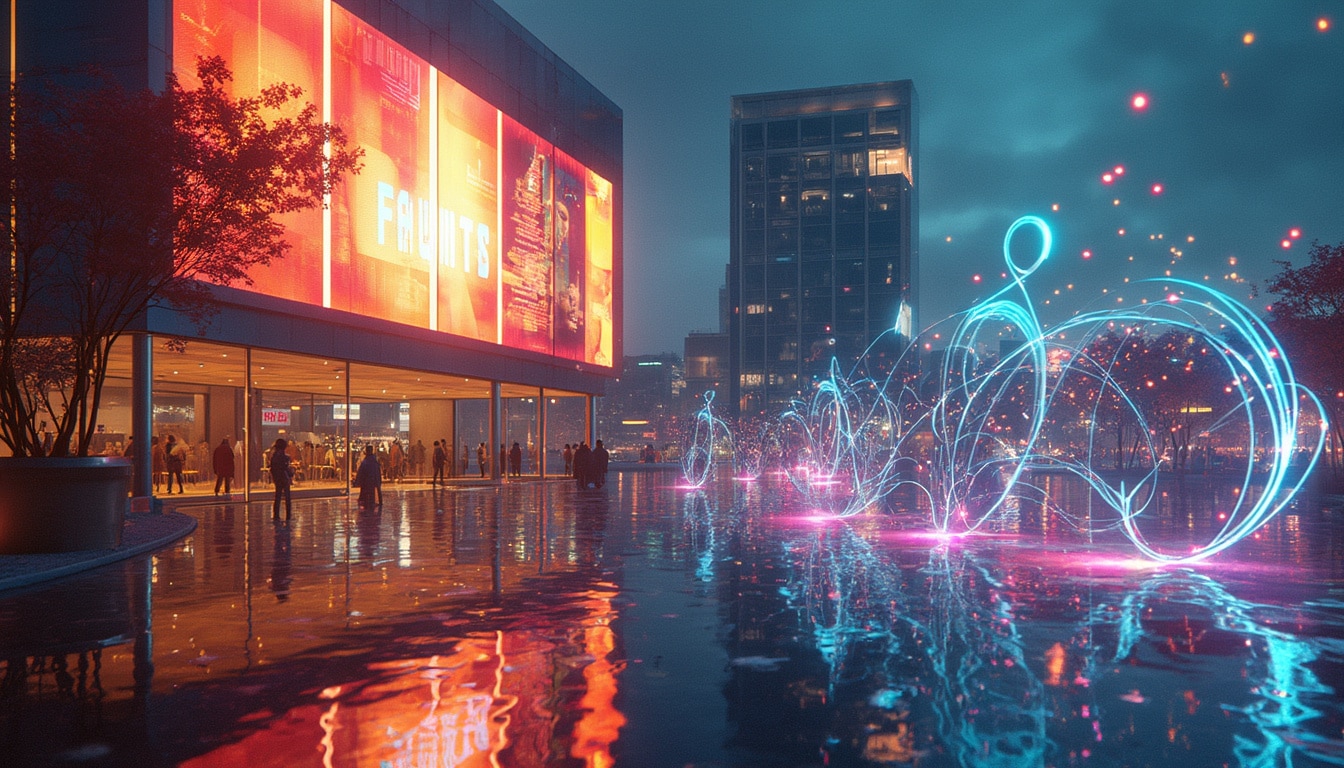« `html
Human creativity has always been a tapestry woven from the threads of the past. From the brushstrokes of Renaissance artists to the penning of literary giants, each masterpiece stands on the shoulders of its predecessors. Now, as artificial intelligence steps into the creative arena, this age-old process faces a high-tech twist.
The debate ignites as tech giants are accused of using authors’ works to train their AI models. Yet, isn’t the act of drawing inspiration from existing creations a fundamentally human trait? AI may simply be accelerating a universal creative process, but at what cost to originality? As we navigate this new landscape, the line between homage and appropriation becomes increasingly blurred.

« `html
Table of contents
Togglecan ai truly steal from authors?
With the rise of artificial intelligence in creative fields, a heated debate has emerged: Is AI simply borrowing from existing works, or is it crossing the line into theft? Critics argue that AI systems like those developed by Meta are using authors’ texts without permission to train their models, effectively “stealing” intellectual property. However, it’s essential to consider that human creativity has always been a tapestry of influences and inspirations. Just as authors draw from previous works, AI is replicating a similar process on an unprecedented scale.
Consider the way writers like George Orwell were influenced by Evgueni Zamiatine’s « We » to create « 1984. » This form of inspiration is a cornerstone of creative evolution. The difference lies in the speed and volume at which AI can process and generate content. While humans selectively draw from inspirations, AI absorbs vast amounts of data, potentially blurring the lines between inspiration and imitation.
Moreover, AI lacks the conscious intent behind human creativity. When an author references another work, it’s often to pay homage, critique, or build upon existing ideas. AI, on the other hand, doesn’t possess intent or understanding; it merely identifies and replicates patterns. This raises questions about whether AI-generated content can ever truly be original or if it’s just a sophisticated remix of what already exists.
how human creativity relies on reuse
Human creativity has never been about creating in a vacuum. From the earliest cave paintings to modern literature, creators have always stood on the shoulders of giants. Ian McEwan, for instance, acknowledges the influence of L. P. Hartley’s « The Passer » on his own writing style. Similarly, Richard Osman doesn’t claim to reinvent literary genres but instead revitalizes and modernizes them.
This practice of reusing and reinterpreting existing works is not a flaw but a fundamental aspect of creative evolution. It allows artists to explore new ideas, challenge established norms, and push the boundaries of their mediums. By building upon past works, creators contribute to a continuous dialogue that enriches culture and society.
AI, in replicating this process, is essentially mirroring the human tendency to draw from existing sources. However, the scale and lack of selective intent differentiate it from human creativity. While authors choose specific influences to inspire their work, AI indiscriminately processes vast datasets, which can lead to both innovative outcomes and unintentional plagiarism.
why publishers prioritize trends over originality
The publishing industry, much like film and music, often thrives on existing trends and popular genres. Publishers seek to capitalize on the success of best-sellers by producing similar works that appeal to established readerships. This strategy ensures commercial viability but sometimes at the expense of true originality.
By focusing on what sells, publishers may inadvertently stifle innovation, encouraging authors to conform to proven formulas rather than experiment with fresh ideas. This trend-following behavior raises questions about the balance between commercial success and creative freedom.
Yet, this approach is deeply ingrained in the industry’s business model. The safe bet on popular genres and styles minimizes financial risk and maximizes potential returns. However, it also means that genuinely unique voices may struggle to find a platform, further complicating the relationship between creativity and commerce.
what distinguishes ai-generated content from human-made works?
The debate over AI and authorship often centers on the differences between machine-generated content and human-created works. One key distinction is the element of consciousness and intentionality. Human authors write with purpose, emotion, and a unique perspective, infusing their works with personal experiences and insights.
In contrast, AI generates content based on algorithms and data patterns without understanding or intention. While the output can mimic human writing styles, it lacks the depth of emotional resonance and purposeful narrative that characterizes authentic human storytelling.
Additionally, the creative process for humans involves critical thinking, problem-solving, and the ability to innovate beyond existing paradigms. AI, however, is limited to the data it has been trained on, making it inherently reactive rather than proactive in its creative endeavors.
can ai ever replace human authors?
While AI has made significant strides in generating content, the question remains: Can it ever fully replace human authors? The answer likely lies in understanding the complementary roles that AI and humans can play. AI can assist in tasks such as data analysis, content generation for routine topics, and even providing creative prompts. However, the nuanced understanding, emotional depth, and innovative thinking of human authors are irreplaceable.
Human authors bring a unique voice and perspective that resonate on a personal level with readers. They can infuse their works with subtleties, cultural references, and emotional undertones that AI, as of now, cannot authentically replicate. Moreover, the creative journey of overcoming challenges and evolving ideas is a distinctly human experience that adds value to the final work.
Therefore, rather than viewing AI as a replacement, it may be more productive to see it as a tool that can enhance and support human creativity, allowing authors to focus more on the aspects of storytelling and analysis that require a human touch.
what are the legal implications of ai using authors’ texts?
The legal landscape surrounding AI and its use of authors’ texts is complex and still evolving. Current copyright laws were not designed with AI in mind, leading to ambiguities about what constitutes fair use versus unauthorized reproduction.
Organizations like the Society of Authors, represented by Anna Ganley, have voiced concerns over AI models training on copyrighted material without explicit permission. This raises fundamental questions about intellectual property rights in the age of machine learning.
The blurred lines between inspiration and infringement complicate enforcement. While authors may argue that AI training constitutes a form of theft, others contend that it falls under transformative use, especially if the AI outputs do not directly replicate the original works.
As AI continues to advance, legal frameworks will need to adapt to address these challenges, balancing the protection of creators’ rights with the potential benefits of AI-driven innovation.
how does ai impact the future of writing and creativity?
The integration of AI into the creative industries is poised to have far-reaching effects on the future of writing and creativity. On one hand, AI tools can democratize content creation, providing aspiring writers with resources to develop their skills and generate ideas. This could lead to an explosion of diverse voices and innovative storytelling techniques.
On the other hand, there is a risk that AI-generated content could flood the market, making it harder for human authors to stand out. If publishers and consumers prioritize efficiency and cost-effectiveness over originality and quality, the richness of human creativity could be undermined.
Moreover, the reliance on AI for content creation may shift the skill sets required for writers. Emphasis might move towards those who can effectively collaborate with AI tools, blending technological proficiency with traditional literary skills.
Ultimately, the future of writing and creativity will likely be shaped by how society chooses to balance the benefits of AI with the preservation of human ingenuity and the protection of creative rights.
is the fear of ai stealing justified?
Fear surrounding AI “stealing” from authors is not entirely unfounded, but it may be somewhat overstated. The apprehension stems from concerns about intellectual property rights, the value of human creativity, and the potential for AI to disrupt traditional creative industries.
However, it’s important to contextualize these fears within the broader history of technological advancement. Each major innovation, from the printing press to digital publishing, has faced resistance and concerns about its impact on creators. Yet, over time, these technologies have also opened up new opportunities for expression and dissemination.
That said, the scale and speed at which AI operates introduce unique challenges that require thoughtful consideration and proactive measures. Ensuring that authors retain control over their works and receive appropriate recognition and compensation is crucial in mitigating the negative impacts of AI.
Ultimately, the fear is justified to the extent that it highlights legitimate concerns about the ethical use of technology. Addressing these issues through robust legal frameworks and ethical guidelines can help harness the benefits of AI while protecting the rights and creativity of human authors.
how can authors adapt to the ai-driven landscape?
In an AI-driven landscape, authors can adopt several strategies to remain relevant and protect their creative interests. Embracing AI as a tool rather than viewing it solely as a threat can open up new avenues for creativity and efficiency.
Authors can leverage AI for tasks such as research, idea generation, and even drafting, allowing them to focus more on refining their narratives and developing unique voices. By integrating AI into their workflow, writers can enhance their productivity and explore new creative possibilities.
Additionally, building a strong personal brand and cultivating a loyal readership can help authors differentiate themselves from AI-generated content. Engaging with readers through social media, personal websites, and other platforms can foster a deeper connection that technology alone cannot replicate.
Furthermore, staying informed about the latest developments in AI and understanding its capabilities and limitations can empower authors to make informed decisions about how to incorporate or respond to these technologies in their work.
the ethical considerations of ai in creative industries
The use of AI in creative industries brings forth a host of ethical considerations that must be addressed to ensure fair and responsible use of technology. Key issues include consent, transparency, and the fair compensation of original creators.
Consent is paramount when AI systems use copyrighted material for training purposes. Ensuring that authors have the option to opt-in or opt-out of having their works included in AI datasets respects their rights and autonomy.
Transparency about how AI generates content and the sources it uses can also foster trust and accountability. Clear disclosure of AI involvement in content creation helps consumers make informed decisions and understand the origins of the material they consume.
Fair compensation is another critical aspect. If AI-generated content relies heavily on existing works, mechanisms should be in place to ensure that original authors receive appropriate credit and remuneration for their contributions.
Addressing these ethical considerations requires collaboration between technologists, legal experts, authors, and other stakeholders to develop guidelines and policies that balance innovation with respect for creative rights.
real-world examples of ai and author interactions
Several real-world instances illustrate the complex relationship between AI and authors. One notable case involves Meta, which faced backlash for using authors’ texts without consent to train its AI models. The Society of Authors, led by Anna Ganley, publicly criticized these practices, highlighting the potential for misuse and exploitation of creative works.
Another example is the development of AI-powered writing assistants like OpenAI’s GPT series, which are used by writers to generate ideas, drafts, and even entire articles. While these tools can enhance productivity, they also raise questions about originality and the role of human authors in the creative process.
Additionally, there are instances where AI-generated books have been published and marketed, prompting debates about the legitimacy and value of machine-created literature. These cases serve as touchpoints for broader discussions about the place of AI in the literary world and the measures needed to protect and support human creativity.
Such examples underscore the need for ongoing dialogue and regulation to navigate the evolving dynamics between AI and authors, ensuring that technology serves to augment rather than undermine human creativity.
the balance between innovation and protection
Striking the right balance between fostering innovation and protecting creative rights is essential in the age of AI. On one side, AI offers unprecedented opportunities for innovation, enabling new forms of storytelling, interactive media, and personalized content that were previously unimaginable.
On the other hand, protecting the rights of creators ensures that their contributions are acknowledged and valued, maintaining the integrity of creative industries. This balance is crucial to prevent exploitation while still encouraging the use of technology to push creative boundaries.
Policies and frameworks that support this balance might include clear guidelines on data usage, fair compensation models for authors, and the establishment of ethical standards for AI development. Collaboration between creators, technologists, policymakers, and industry leaders is vital to create an environment where innovation thrives without compromising the rights and incentives of human authors.
By thoughtfully navigating these challenges, society can harness the benefits of AI while preserving the sanctity of human creativity, ensuring a future where both coexist harmoniously.
conclusion: navigating the future with ai and authors
As AI continues to evolve and integrate into creative industries, the relationship between technology and human authors becomes increasingly intricate. While concerns about AI “stealing” from authors are valid, they also present an opportunity to rethink and redefine creativity in the digital age.
By acknowledging that both AI and human creativity rely on existing works, society can work towards ethical frameworks that respect and protect authors while embracing the innovative potential of AI. This entails fostering collaboration, ensuring fair compensation, and maintaining transparency in how AI is used in creative processes.
The future of writing and creativity will likely be shaped by how well we navigate these complexities, balancing the preservation of human ingenuity with the advancements that AI offers. Ultimately, the goal should be to create a synergistic relationship where technology enhances rather than diminishes the value of human creativity.
Share this article:














